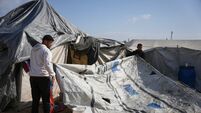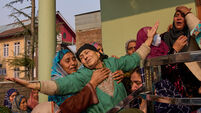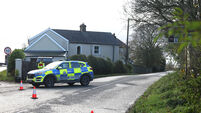Two Nato troops dead, one missing, in Afghanistan
Two soldiers from the Nato-led security force were killed in combat today and a third was missing, a day after the military alliance took command of insurgency-wracked southern Afghanistan.
Militants armed with rocket-propelled grenades ambushed a vehicle of the Nato-led International Security Assistance force in the north of volatile Helmand province, an ISAF statement said.
“Two ISAF soldiers were killed in this attack, one wounded and one remains unaccounted for,” it said, without giving further details, such as the nationalities of the soldiers.
The attack came a day after the Nato force took command of the south from the US-led coalition, with a mission to stabilise a region wracked by a Taliban-led insurgency and the drugs trade.
Nato’s mission is considered the most dangerous and challenging in the Western alliance’s 57-year history. It coincides with the deadliest upsurge in fighting in Afghanistan since late 2001 that has killed more than 800 people – mostly militants – since May.
Meanwhile, Afghan and US-led coalition forces early today arrested four suspected al-Qaida operatives in eastern Khost province.
The four did not resist arrest in the raid launched near Sewakay village, a coalition statement said. One AK-47 assault rifle and a pistol were confiscated from the target location, it added.
The coalition gave no details about the suspects’ nationalities. It accused them of co-ordinating the smuggling of explosives into Afghanistan and planning attacks against Afghan and coalition forces in the east of the country.
With Nato taking charge in the south, the coalition, first deployed nearly five years ago to unseat the Taliban regime for harbouring Osama bin Laden, now is focusing on eastern Afghanistan, where al-Qaida and the Taliban are active.
At yesterday’s ceremony in Kandahar to mark the hand over, ISAF commander British Lt. Gen. David Richards, warned the force would “strike ruthlessly” against Taliban rebels when necessary.
Nato nevertheless hopes to bring a new strategy to dealing with the Taliban rebellion: establishing bases rather than chasing militants. It is also wants to win the support of locals by creating secure zones where development can take place.
Given the level of violence, questions remain whether it can achieve the stability required to let aid workers work in a lawless and impoverished region, where about a quarter of Afghanistan’s huge opium crop is grown.
The changeover in the south followed three days of intense fighting that left nearly 60 suspected Taliban dead.













